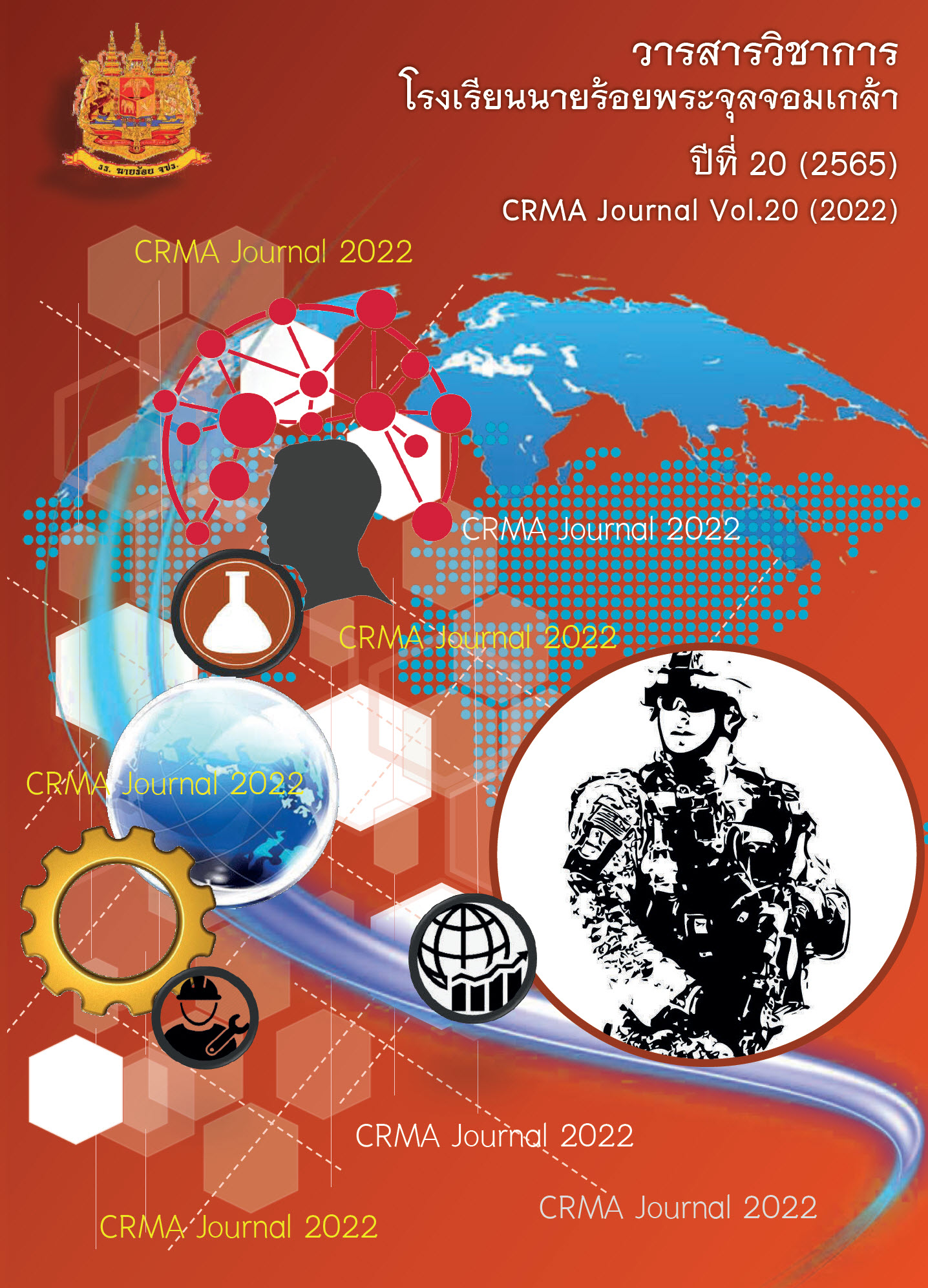Preparation and Investigation into the Effect of Mechanical Treatment Time on the Properties of Cellulose Nanofibril
Main Article Content
Abstract
In this work, sisal fiber was defibrillated into cellulose nanofibrils by mechanical treatment. The nanofibrillated fibers were subsequently characterized by field emission scanning electron microscope (FE-SEM), X-ray Diffractometer (XRD), Fourier transform infrared spectrometer (FTIR), and thermogravimetric analyzer (TGA). The cellulose nanofibers had been successfully prepared by high pressure homogenization at various mechanical treatment times (i.e., 50, 70, and 90 min). The morphology studies revealed the diameter of nanofibers was within the range of 10-30 nm. The experimental results showed that the thermal stability decreased (281.8-272.5๐C) with increasing defibrillation time, as a result of the reduction in crystallinity index (72.3-58.5%). Nevertheless, a decrease in crystallinity could enhance the absorption property, and the further study is going to use the nanocellulose as a precursor to prepare an absorptive hydrogel. The cellulose nanofibrils could be utilized in several applications, for instance, packaging, coating, electronic devices, medical, and cosmetic.
Article Details

This work is licensed under a Creative Commons Attribution-NonCommercial-NoDerivatives 4.0 International License.
Copyright of all articles published is owned by CRMA Journal.
References
H.P.A. Khalil et al., “Production and modification of nanofibrillated cellulose using various mechanical processes: a review,” Carbohydrate Polymers, vol. 99, pp. 649-65, 2014.
O. Faruk et al., “Biocomposites reinforced with natural fibers: 2000-2010,” Progress in Polymer Science, vol. 37, pp. 1552-1596, 2012.
K. Pacaphol and D. Aht-Ong, “The influences of silanes on interfacial adhesion and surface properties of nanocellulose film coating on glass and aluminum substrates,” Surface & Coatings Technology, vol. 320, pp. 70-81, 2017.
K. Pacaphol, K. Seraypheap, and D. Aht-Ong, “Development and application of nanofibrillated cellulose coating for shelf life extension of fresh-cut vegetable during postharvest storage,” Carbohydrate Polymers, vol. 224, pp. 115167, 2019.
C. Lu et al., “Reinforcement of all-cellulose nanocompositefilms using nativecellulose nanofibril,” Carbohydrate Polymers, vol. 104, pp. 143-150, 2019.
K. Uetani and H. Yano, “Nanofibrillation of wood pulp using a high-speed blender,” Biomacromolecules, vol. 12, pp. 348-353, 2011.
F. Jiang and Y.L. Hsieh, “Chemically and mechanically isolated nanocellulose and their self-assembled structures,” Carbohydrate Polymers, vol. 95, pp. 32-40, 2013.
A.F. Turbak, F.W. Snyder, and K.R. Sandberg, “Microsoft-fibrillated cellulose, a new cellulose product: properties, uses, and commercial potential,” Proceedings of the Ninth Cellulose Conference, Applied Polymer Symposia, New York, Wiley, 1983.
A.N. Nakagaito and H. Yano, “The effect of morphological changes from pulp fiber towards nano-scale fibrillated cellulose on the mechanical properties of high-strength plant fiber based composites,” Applied Physics A, vol. 78, pp. 547-552, 2004.
T. Zimmermann, E. Pöhler, and T. Geiger, “Cellulose fibrils for polymer reinforcement,” Advanced Engineering Materials, vol. 6, pp. 754-761, 2004.
L. Mathew et al., “Isolation and characterization of cellulose nanofibrils from Helicteres isora plant,” Industrial Crops and Products, vol. 59, pp. 27-34, 2014.
J. Bras et al., “Microfibrillated cellulose – its barrier properties and applications in cellulosic materials: a review,” Carbohydrate Polymers, vol. 90, pp. 735-764, 2012.
S.M. Sapuan, “Sugar palm nanofibrillated cellulose (Arenga pinnata (Wurmb.) Merr): effect of cycles on their yield, physic-chemical, morphological, and thermal behavior,” International Journal of Biological Macromolecules, vol. 123, pp. 379-388, 2019.
A. Kaushik and M. Singh, “Isolation and characterization of cellulose nanofibrils from wheat straw using steam explosion coupled with high shearhomogenization,” Carbohydrate Polymers, vol. 346, pp. 76-85, 2011.
S.M. Sapuan, “Isolation and characterization of nanocrystalline cellulose from sugar palm fibres (Arenga Pinnata),” Carbohydrate Polymers, vol. 181, pp. 1038-1051, 2018.
I. Ahmad et al., “Effect of hydrolysis conditions on the morphology, crystallinity, and thermal stability of cellulose nanocrystals extracted from kenaf bast fibers,” Cellulose, vol. 19, pp. 855-866, 2012.
P. Sukyai, “An environmentally friendly xylanase-assisted pretreatment for cellulose nanofibrils isolation from sugarcane bagasse by high-pressure homogenization,” Industrial Crops and Products, vol. 82, pp. 149-160, 2016.
S.H. Imam, “Cellulose nanowhiskers from coconut husk fibers: effect of preparation conditions on their thermal and morphological behavior,” Carbohydrate Polymers, vol. 81, pp. 83-92, 2010.
K. Pacaphol and D. Aht-Ong, “Preparation of hemp nanofibers from agricultural waste by mechanical defibrillation in water,” Journal of Cleaner Production, vol. 142, pp. 1283-1295, 2017.
F.B. Oliveira, “Production of cellulose nanocrystals from sugarcane bagasse fibers and pith,” Industrial Crops and Products, vol. 93, pp. 48-57, 2016.
I. Hongrattanavichit and D. Aht-Ong, “Nanofibrillation and characterization of sugarcane bagasse agro-waste using water-based steam explosion and high-pressure homogenization,” Journal of Cleaner Production, vol. 277, pp. 123471, 2020.


